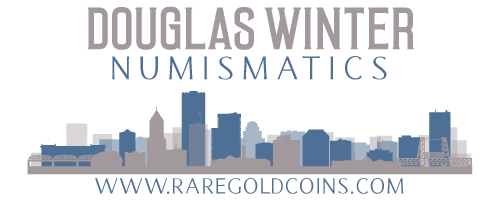2008 Baltimore & Phoenix Show Reviews
/Two weeks. Two shows. Too much? Read on for a quick overview of the recent Baltimore and Phoenix coin conventions.
I love the Baltimore show. Unlike some conventions that feel like they are in a death spiral, you can clearly sense that this show is fresh, healthy and on the upswing. And this year’s first edition was excellent.
The only negative about this show, at least for me, is the epic day-long schlep that entails getting to Baltimore from Portland. If anyone reading this would like to exchange trips on their private jet for U.S. gold coins please feel free to propose a trade immediately.
I spent two full working days in Baltimore. The first, a Thursday, was essentially a wholesale-only day. As you will probably guess, the usual “it was hard to buy and easy to sell” mantra held to form. Except that this time it was exceedingly hard to buy and really easy to sell. Every dealer I chatted with, even those with reputations for exaggeration confirmed this. In the world of nice, interesting coins it’s as dry as the Mojave on the bourse floor!
My second day, a Friday, was more of a retail day. From the opening of the show until the end of the day I had a constant stream of serious buyers at my table. Most walked away with a new purchase or two and most seemed very enthusiastic about the show.
If I had to make one negative comment about this Baltimore show it would be that, while full of the usual Cast of Collecting Characters, there didn’t seem to be many new faces. I’m guessing that this can be attributed to the fact that many of the new breed of upscale collectors do not attend shows and acquire coins primarily through auctions or via the Web from dealers such as me.
The Bowers and Merena sale conducted at Baltimore had some nice gold pieces and prices for the most part seemed to be quite strong. My two favorite gold lots were a really fresh 1840-O quarter eagle in an old green label PCGS MS62 holder that sold for $20,700 and a seemingly way undergraded 1843-O Large Date quarter eagle graded MS61 that brought a robust $17,940.
What was hot at the show? Early gold and Proof gold were in great demand, particularly nice quality material. I noted a lot of demand for interesting, choice items in the $1,500-7,500 range but even in bad markets coins like this is always easy to sell. Without a doubt the weakest area of the market was low end generic gold. In fact, price premiums are so low on coins like AU55 to MS61 common date $20 Liberty gold that there is a strong possibility that people will start melting these soon.
After what seemed like 45 minutes at home I turned around and went to Phoenix to attend the Spring ANA. Note to ANA Officials: great choice of venue but bad choice of dates. If you want more dealer enthusiasm for this show in the future DO NOT hold it the next week after Baltimore.
Because of the fact that most major dealers had recently attended Long Beach and Baltimore, the Phoenix show had many no-shows from the East Coast. Not only was there little enthusiasm, there were almost no fresh coins. Which meant that I wasn’t able to buy much and which meant that I had minimal enthusiasm.
I wound-up leaving the show early due to a combination of boredom, fatigue and the fact that I am preparing to fly out of town to pick-up a nice collection that I just bought. This collection has nice runs of Carson City double eagles, New Orleans eagles and Three Dollar gold and I expect to begin listing these coins on my website within a week or so.
There are no other coin shows of note between now and the Central States show in mid-April so I expect that demand for nice coins will be extremely high within a month and that the result will be an exceptionally good show in Chicago.













